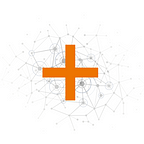Burnout has fast become pandemic nomenclature. While the term was reportedly coined in the 1970s, it has been in particularly sharp focus over the last 18 months as we looked a global pandemic in the eye and tried to continue our working lives.
As many started working remotely — and those that didn’t worked in high-stress, potentially dangerous situations — burnout has been steadily on the rise. From a quick Google Trends assessment of ‘burnout’ and some key related phrases, it’s clear to see a steady up-tick in relevancy.
Our recent research also suggests that burnout is hot in the minds of leadership:
“I have seen enormous fatigue and burnout amongst the workforce and the leadership team, especially the 14 senior partners who report to me. They are facing a wave of resignations from their teams — people are jumping ship because they need some kind of break and have been ground down by the last year.” Global Lead Leadership Services, FTSE 100
While many leaders are addressing these issues, lots of more traditional, command and control leadership styles remain prevalent. Whether it’s the resignation of KPMG’s UK chair after insensitive comments to staff or Goldman Sachs’ junior employees complaining about their inhumane workloads, burnout is hitting headlines — even in the organisations well-known for their long hours.
“Command and control will not work in distributed workplaces, we no longer see people as assets like in the 1970s when the sole purpose of companies was to make money; leaders now need competence, integrity and compassion.” CEO, UK, 300
Many are therefore asking whether this is a turning point in working culture? Those hailing today’s workforce as ‘snowflakes’ or ‘generation burnout’ certainly don’t think so, but the fact that 26% are considering leaving their current job after the pandemic almost speaks for itself. Just have a scroll through TikTok and you’ll quickly get a sense of how people feel about work at the moment.
Now, as the world prepares for a hybrid-first work system, there will be a huge need to support the adjustment. Additional care will be needed as organisations transition to decentralised and multi-space working, and the threat of a disconnected organisation poses a real challenge and a new crisis is brewing— a mental health crisis. A recent study found that 89% of people say their workplace well-being has declined over the last 12 months. This is upsetting to see, but many employees see the emerging ‘work from anywhere’ trends as an opportunity to leave these unsupportive cultures and find a new job that suits them better.
The importance of listening and of a supportive, trusting culture will therefore play a critical role during these transitory periods to ensure that an organisation changes positively and inclusively for all. It is an essential lesson for leadership teams, and one leader told us: “without the motivation and well-being of the team, we don’t have a team”.
This week, we’re talking about burnout and well-being at Temporall.
We will be exploring what the true impact of burnout is, and how leadership teams can mitigate the challenges of a hybrid and uncertain working environment for their employees.
Our technology helps you identify, understand and minimise burnout — contact us for a free POC now. Stay tuned for videos, demos and insight pieces from our team.
